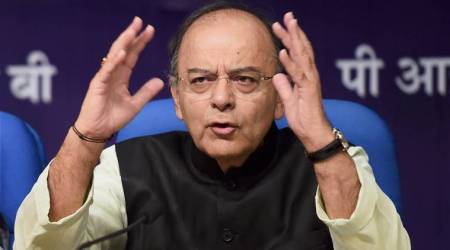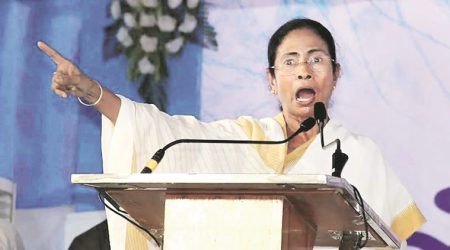 Demonetisation was quackery. There was absolutely no reason to disrupt the economy by declaring, in a near-midnight strike, that high-value currency notes would no longer be legal tender.
Demonetisation was quackery. There was absolutely no reason to disrupt the economy by declaring, in a near-midnight strike, that high-value currency notes would no longer be legal tender.
There are three kinds of people who claim to have some knowledge of the state of the economy — economists, quacks and students of economics. I believe I am a student learning economics every day since Eco 101 in 1967-68. Most of my learning was on the job as Commerce Minister or Finance Minister.
My first teacher was Dr Simon Kuznets. I am proud to count among my teachers Dr Manmohan Singh, Dr C Rangarajan, Mr Montek Singh Ahluwalia, Dr Venugopal Reddy, Dr Bimal Jalan, Dr Parthasarathy Shome, Dr Saumitra Chowdhury, Dr Jahangir Aziz, Dr Raghuram Rajan and many young economists. Those names should ring a bell. Each one of them occupied a key position in the UPA government and, at any time, four or five of them were available to advise the Prime Minister and the Finance Minister. Each one of them was a renowned economist and did not indulge in quackery.
Demonetisation was quackery. There was absolutely no reason to disrupt the economy by declaring, in a near-midnight strike, that high-value currency notes would no longer be legal tender. After talking to a number of people I had predicted that the cost to the economy would be between 1 and 1.5 per cent. I am not happy that I have been proved right.
Opposition spot on
The data released by the Central Statistics Organization on May 31, 2017, has proved that the Opposition was spot on:
* The Indian economy began slowing down in mid-2016 (beginning of Q2); demonetisation made it worse.
* Gross Value Addition (GVA) is the new metric. Growth of GVA declined from 7.9 per cent in 2015-16 to 6.6 per cent in 2016-17. The cost to the economy was 1.3 per cent. That is bang in the middle of the range that I had predicted.
* Between Q4 of 2015-16 and Q4 of 2016-17, the quarterly growth rate of GVA declined by an astonishing 3.1 per cent (from 8.7 per cent to 5.6 per cent). It was a man-made calamity.
* On the new base year of 2011-12, GDP declined by 0.9 per cent (from 8.0 per cent in 2015-16 to 7.1 per cent in 2016-17).
If you drill further into the data released by the CSO, you will find many other disquieting features. Core sector growth, which is a truer measure of industrial activity, fell from 10.7 per cent in Q4 of 2015-16 to 3.8 per cent in Q4 of 2016-17. Mining, manufacturing, electricity, construction, trade, hotels, transport, communication, finance, real estate and professional services had declined. Of these, the construction sector, which is the second largest job-creating sector, shrunk by 3.7 per cent in 2016–17 (meaning, job losses). Gross Fixed Capital Formation (GFCF) as a proportion of GDP, at constant prices, was 29.5 in 2016-17 against 30.9 and 31.3 in the previous two years. The government had flatly denied a decline in investment and cited FDI numbers. That myth now stands exposed.
Three major failures
All these confirm the arguments I have been making for weeks — that the government has totally failed to address the issues of declining investment as a proportion of GDP; sluggish credit growth; and non-creation of new jobs. These trends were visible in early- and mid-2016. Instead of addressing those issues, the government relied on the advice of quacks, kept out the Chief Economic Adviser, demonetised high-value currency notes, sucked out Rs 1,544,000 crore from the system and sent the economy into a tailspin. The government tried to justify demonetisation by putting up three objectives — end to black money, end to fake currency and end to terrorism. The objectives were unexceptionable, the minor difficulty being that none of them could be achieved — or was achieved — through demonetisation!
Ending corruption was added as an objective, but in the light of numerous seizures of cash in new Rs 2,000 notes from government officers, that objective was quickly abandoned.
Cash is back
The narrative was then cleverly shifted to digitisation and the impractical idea of a cashless economy. A lot of people were taken in by the surge in non-cash transactions. That surge was temporary because cash was not available. Once cash became available, the balloon of digitisation was also punctured. Look at the RBI’s data released at about the same time as the CSO’s data. Electronic payments month-wise since November 2016 have been:

Cash is back, as the primary channel to exchange value. One day the RBI must disclose the volume/value of the demonetised currency notes that were returned to the RBI. It must also re-monetise the economy sufficiently to meet the needs of the people. When both numbers will be known, the believers in demonetisation will realise that India is back to the pre-November 8, 2016, days and will ask the inevitable question: ‘What purpose did demonetisation serve except to disrupt the economy and heap misery upon millions of people?’
It is time for the government to stop fooling the people that all’s well with the economy and that the current policies are working. They are not. The government must get on with the job of reviving the economy by relying on the advice of truly knowledgeable economists. They can start with the only one they have, Dr Arvind Subramanian.
Website: pchidambaram.in
@Pchidambaram_IN

